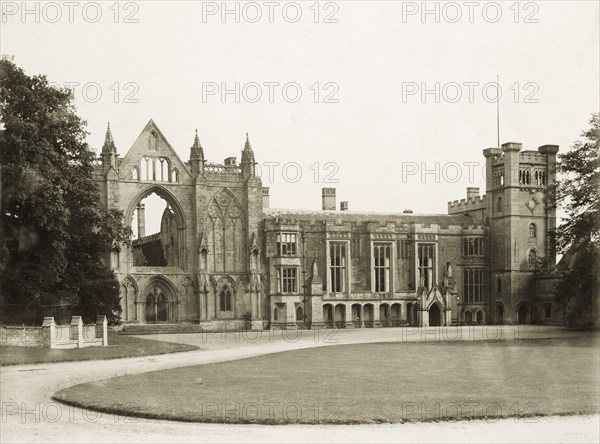
Sujet
West aspect of Newstead Abbey, Nottinghamshire, c1900. Artist: Henson & Co
Légende
West aspect of Newstead Abbey, Nottinghamshire, c1900. The abbey was founded between 1163 and 1173 by Henry II as a priory of Augustinian Canons with the help of a grant from Henry II. After the Dissolution of the Monasteries in 1540, Henry VIII sold the abbey to the Byron Family, and it is now best known for being the ancestral home of Lord Byron. Since Byron's death in 1824, the Abbey has attracted thousands of visitors from all world who come to see the poet's former ancestral home. Thomas Wildman, the new owner of Newstead, had inherited a fortune from plantations owned by his family in Jamaica. He spent this wealth repairing and restoring Newstead, which was in a very poor state when he bought it. Like the Byrons before him, Wildman preserved the medieval style of the house. He employed the architect John Shaw to carry out alterations which blend well with the oldest parts of the building. Likewise, Wildman filled the house with fine old tapestries, ancient armour and antique furniture in keeping with its long history. In 1861 William Frederick Webb, African explorer and friend of Dr David Livingstone, purchased the Abbey from Thomas Wildman's widow. Under Mr Webb, the chapel was redecorated but the rest of the house remained largely unaltered. After Mr Webb died in 1899, the estate passed to each of his surviving children and finally to his grandson Charles Ian Fraser. Mr Fraser sold Newstead to the Nottinghamshire philanthropist Sir Julien Cahn, who presented it to the Nottingham Corporation in 1931
Nottingham City Council collections
Date
2009
Crédit
Photo12/Heritage Images/Nottingham City Council
Notre référence
HRM19D66_167
Model release
Non
Licence
Droits gérés
Format disponible
50,1Mo (2,0Mo) / 41,1cm x 30,5cm / 4860 x 3601 (300dpi)